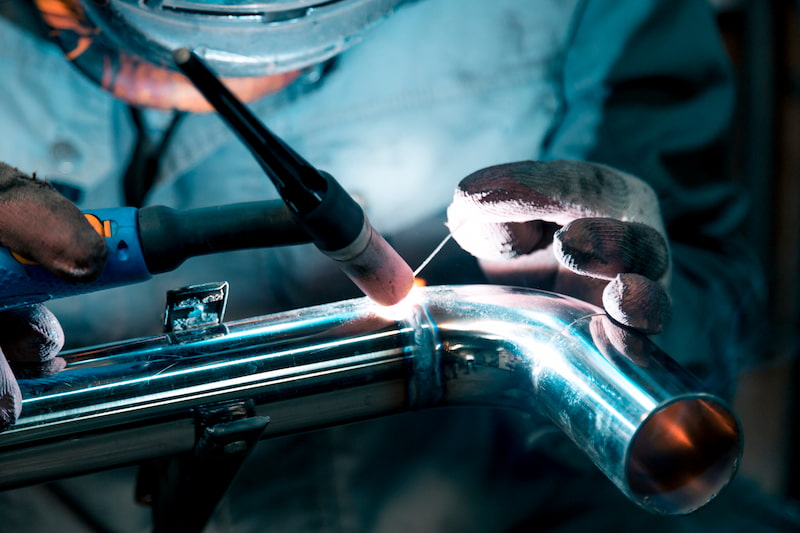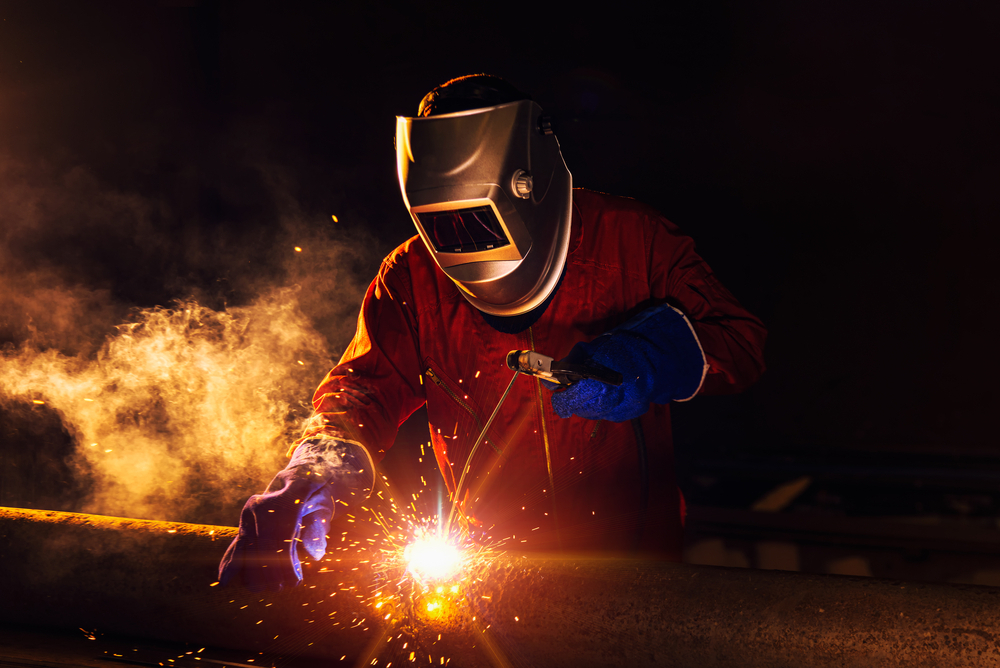Typical Welding Repair Work Issues and Just How to Address Them Properly
Welding repair work frequently experience a variety of issues that can endanger the integrity of the last item. Common problems consist of insufficient penetration, porosity, and imbalance, among others. Each defect provides distinct obstacles that call for specific methods for resolution. Comprehending these issues is vital for welders aiming to improve their results and skills. This conversation will certainly check out these common welding repair work problems and efficient methods to address them.
Insufficient Infiltration
Insufficient penetration takes place when the weld metal fails to completely fuse with the base product, causing weak joints and potential architectural failures. This concern frequently comes from insufficient warm input, incorrect electrode angle, or incorrect welding speed. Welders may run into insufficient penetration because of a miscalculation of the necessary specifications for a specific material thickness or type. Furthermore, contamination on the base material's surface area can impede reliable bonding, intensifying the problem. To address poor infiltration, welders need to assure suitable setups on their devices and keep a tidy job surface. Normal evaluation of welds is advised to identify any deficiencies early, permitting for timely modifications and the prevention of endangered architectural integrity in welded settings up.
Porosity
Porosity is a common problem in bonded joints that manifests as small gas bubbles trapped within the weld steel. This issue can endanger the honesty of the weld, bring about lowered toughness and potential failure under stress and anxiety. Montana Mobile Welding and Repair Belgrade. Porosity commonly emerges from contamination, moisture, or improper welding strategies, which permit gases to escape right into the molten weld pool. To deal with porosity, welders ought to guarantee proper surface area preparation, maintain a clean functioning environment, and utilize appropriate welding criteria. Additionally, choosing the right filler material and shielding gas can alleviate gas entrapment. Routine inspection and screening of welds can aid identify porosity early, assuring timely restorative activities are taken, consequently maintaining the high quality and reliability of the welded framework
Imbalance
Misalignment in welding can develop from different aspects, including inappropriate arrangement and thermal growth. Comprehending the origin is important for reliable resolution. A number of adjustment strategies are available to straighten parts and guarantee structural integrity.
Sources of Imbalance
Welding imbalance frequently originates from a range of underlying concerns that can jeopardize architectural stability. One key cause is incorrect fit-up of components before welding, which can result in gaps and unequal surface areas. Variations in thermal development during the welding process can likewise result in distortion, specifically if the materials being joined have various coefficients of expansion. In addition, insufficient clamping and fixturing might fall short to hold parts safely in place, leading to motion throughout welding. Badly conserved equipment, including welding makers and tools, may introduce incongruities in the weld bead, additional adding to imbalance. Finally, operator error, originating from insufficient training or experience, can also play a significant duty in producing misaligned welds.
Improvement Methods Offered
Resolving misalignment successfully calls for a mix of rehabilitative strategies tailored to the specific concerns handy. One usual technique is the usage of jigs or fixtures to hold components in the appropriate position throughout welding, making certain regular positioning. In addition, pre-heating the products can help in reducing distortion and boost fit-up. For considerable imbalance, mechanical realignment strategies, such as using hydraulic jacks or clamps, can be used to deal with the placement before welding. Post-weld heat treatment might likewise be needed to alleviate stress and anxieties triggered by misalignment. Ultimately, careful evaluation and modification during the arrangement stage can avoid imbalance concerns from becoming substantial problems, promoting a smoother welding process and boosting general architectural integrity.
Distortion
Distortion is an usual obstacle in welding that can arise from different aspects, consisting of irregular cooling and heating. Recognizing the reasons of distortion is essential for applying efficient prevention methods. Resolving this concern not just boosts architectural honesty yet additionally improves the general high quality of the weld.
Sources of Distortion
When subjected to the extreme warmth of welding, materials often go through changes that can lead to distortion. This sensation mainly develops from thermal growth and contraction throughout the welding process. As the weld location heats up, the material expands; upon cooling, it acquires, which can create inner stress and anxieties. In enhancement, uneven heating across a work surface can exacerbate these stresses, resulting in bending or bending. The sort of product likewise plays a significant duty; steels with varying thermal conductivity and coefficients of expansion may respond in a different way, resulting in uncertain distortions. Inadequate joint style and inadequate fixturing can contribute to imbalance during welding, raising the probability of distortion. Understanding these causes is important for reliable welding repair and prevention methods.
Avoidance Techniques
Efficient avoidance methods for distortion throughout welding emphasis on regulating heat input and ensuring correct joint design. Preserving a consistent warm input assists to reduce thermal expansion and contraction, which can cause distortion. Using techniques such as pre-heating the workpiece can also reduce the temperature slope, advertising uniform look at this web-site heating. In addition, selecting proper joint designs, such as T-joints or lap joints, can improve stability and decrease anxiety focus. Applying correct fixturing to protect the workpieces in position further aids in keeping placement throughout the welding process. Staggered welding series can disperse warm extra equally, preventing localized distortion. By using these techniques, welders can substantially decrease the likelihood of distortion and improve the overall quality of their welds.
Breaking
Cracking is a typical concern experienced in welding repair services, often arising from different factors such as improper cooling rates, product choice, or poor joint preparation. The incident of cracks can considerably endanger the integrity of the weld, causing prospective failures during procedure. To address this concern, welders have to first evaluate the origin creates, ensuring that materials work and appropriately picked for the specific application. Furthermore, controlling the cooling price during the welding process is important; quick air conditioning can cause tension and lead to breaking. Proper joint style and prep work additionally add to minimizing the threat. Carrying out these approaches can enhance weld high quality and durability, ultimately decreasing the probability of fracturing in ended up weldments.

Incomplete Blend
A significant problem in welding repairs is insufficient blend, which occurs when the weld steel does not appropriately bond with the base product or previous weld passes - Montana Mobile Welding and Repair Welding. This defect can cause weaknesses in the joint, possibly endangering the honesty of the bonded structure. Elements adding to incomplete blend include insufficient warmth input, incorrect welding strategy, and contamination of the surface areas being joined. To address this issue effectively, welders should assure correct pre-weld cleaning and surface area preparation, along with adjust their welding parameters to accomplish appropriate this post penetration and fusion. Normal assessment throughout the welding procedure can likewise aid determine insufficient fusion early, enabling timely corrective actions to improve the general top quality of the weld
Overheating
While welding fixings can boost architectural honesty, overheating provides a substantial difficulty that can cause material destruction. Excessive warmth during welding can modify the mechanical residential or commercial properties of steels, causing reduced stamina, raised brittleness, and warping. This sensation is especially important in high-stress applications where architectural dependability is extremely important. Recognizing getting too hot can entail aesthetic inspections for staining or distortion, in addition to monitoring temperature level during the welding procedure. To minimize the dangers associated with overheating, welders should use proper techniques, such as regulating warm input, readjusting travel rate, and utilizing ideal filler materials. In addition, executing pre- and post-weld warmth therapies can aid recover product properties and enhance the general high quality of the repair service, making certain lasting efficiency and safety.
Regularly Asked Questions
What Are the Usual Signs of a Welding Problem?

Just How Can I Check My Welds for High quality?
To test welds for quality, one can make use of visual evaluations, ultrasonic testing, and website here radiographic techniques. Each method ensures structural stability, identifies problems, and confirms adherence to specified criteria, inevitably boosting the reliability of the bonded joints.
What Security Precautions Should I Take While Welding?
When welding, one should prioritize security by using proper individual safety tools, guaranteeing correct air flow, protecting flammable products away, preserving a clean office, and knowing environments to prevent injuries and accidents.
Can I Repair a Weld Without Redesigning the Entire Joint?
Repairing a weld without renovating the whole joint is possible, depending upon the damages (Fabrication). Methods such as grinding, including filler material, or making use of a welding procedure can properly address particular defects while protecting the bordering framework
What Equipment Are Necessary for Efficient Welding Fixes?
Vital devices for efficient welding repair services consist of a welding equipment, cable brush, grinder, safety gear, clamps, and filler products. Each device plays a crucial function in ensuring quality and safety throughout the fixing procedure. Porosity generally emerges from contamination, dampness, or incorrect welding strategies, which enable gases to escape into the molten weld swimming pool. Badly maintained devices, consisting of welding equipments and devices, may present variances in the weld grain, further contributing to imbalance. When subjected to the extreme warm of welding, materials usually go through adjustments that can lead to distortion. Breaking is a typical issue encountered in welding repair work, commonly resulting from different factors such as improper cooling prices, product selection, or poor joint preparation. A substantial concern in welding repair services is insufficient blend, which occurs when the weld steel does not properly bond with the base material or previous weld passes.
Comments on “Expert welding repair tips from Belgrade Welding professionals”